Today we have been testing the F65 camera at Cam-a-Lot.
It looks quite okay and is probably worthy delivering the footage for Mango. :)
Joris, our Director of Photography, seemed to have enjoyed it very much!
We shot all kinds of tests with it, more stops, less stops, green stuff, grey stuff, Ian, me and even some action scenes!
But: we can’t see it yet! It is stuck in a black box with green blinking lights from Sony. At the moment I am still sitting at Camalot and waiting for the data transfer to be finished. Having 4k footage is nice, but copying it is not very nice. Maybe there are still some bottlenecks so it might get better.
Basically, as far as I understood it, it works like this: You shoot 12 minutes of footage, then you have filled up a 256GB SSD card. This card you stick into a closed black box with blinking lights. You can access the footage on that card through network with a webbrowser. From there you can dump the Sony F65 raw footage as MXF files onto harddrives, one main, one backup. These harddrives will be hooked up to a Mac or a Windows machine with the F65viewer app on it. That can then be used to export the OpenEXR sequences and proxy videos onto the server. Then we will be finally in the save and open haven of linear image sequences.
I hope that soon I can grab the drive with the footage and bike home to the Institute to take the next challenge, the file-conversion. After that we can finally test the whole workflow and see what we can improve. So, no footage yet today!
More to come the next days!

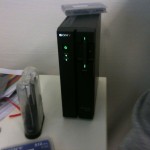
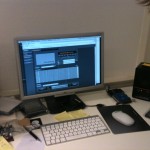
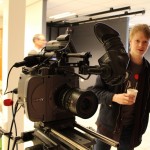
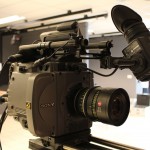

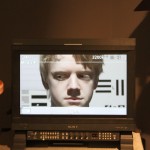
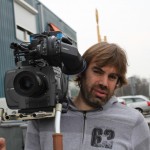

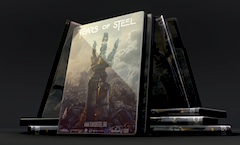
Thats one nice camera! Though what happened with RED camera? (maybe i have missed/ misinterpreted something :P )
We still have to do the RED test. But currently we are aiming for shooting with this one. Depending on the outcome of various tests.
That is one bulky camera, I’m sure the footage that it outputs will make that irrelevant though ;)
Did I read this right; the only way to access the filmed footage is via internet only? Would have thought USB 3.0 connection would be faster.
Accessing it via an internet connection seems silly. Especially if you’re having to transfer anywhere up to 256GB!
Good luck! :P
Well, internet/network – all slow. :P
Well, u know that ethernet 1G has a theorical rate of 1GB a second so I dont thing than even SSD could do better than 1 GB a second. Limit never reached :)
That’s actually 1 Gb a second – 8 times less, so 125 MB/s.
But that’s a theoretical maximum, which is practically never reached!
Oh, okay! :D Now I can see it happening. lol
Did you use the 4K EXR files or the proxy version for motiontracking ?
Because i think one frame have 14MB so it must be possibile but only verry slow if you not use a big SSD RAID ;)
BTW it would be a very cool feature if you could use a live input for example a elphel or a god webcam for live motiontracking.
This would be nice for performance capturing is there any future plan about that?
greetings from ausria
ooooooh….
that would be cool…
now all i need is a webcam :P
And with a few synconisized cam´s this this would give a nice mocap system :)
dreaming …
The EXR files will be used for compositing. The current plan is to generate slightly preprocessed 4K TGA sequences for tracking. And of course much smaller proxies for 3d viewport, edits and previews.
Live tracking would be cool, but currently not doable.
Hi… 12 minutes fill 256 GB I mead 262.144 mb this is realy inseane :D
and I ask my self is thad Camera Bedder than the RED?
and what about Money…?
(I know the RED it is better to don’t aske… )
seriosly say anyone “I wont to take the Movie” or “No no go on I don’t wont to break it” ???
“These harddrives will be hooked up to a Mac or a Windows machine with the F65viewer app on it.”
=(
I’m assuming this is because the F65viewer isn’t available for Linux?
Is Mango going to be shooting on the Leica Summilux-C primes?
Everyone in Toronto is drooling to play with those lenses.
Wrong reply…
Exactly. That’s going to be one ugly closed part of the pipeline.
Then use the Alexa and record as Log C prores. Its the camera next to the F65 at the cam-a-lot website. Blender can read these files.
I dont know if ffmpeg is getting the full color information out of the 4444 video files, but the look of the ungraded material is right.
Hope this helps.
Blender can read Prores? Oh?
You can also connect a SATA harddrive directly to the ‘Black Box’ and simply give the copy command in the webinterface, if there’s a SATA module in it.
Btw, don’t they have 1TB cards at Camalot?
Did you shoot with the mechanical shutter?
Can’t wait for the results!
Will you use crane and dolly rigs too, or just the shoulder rig? Certain dolly or crane specific movements really help deliver the cinema-feel ;)
I saw an interview with Robert Rodriguez once. He said that for him, the main advantage of filming digitally is that you waste no time on changing film in the camera and that you can immediately view the real result on a good monitor, instead of watching a video version of the footage on set and wait for the film to develop.
Reading Sebastians story makes it sound like with this camera, these advantages are not really there any more. You have to change SSD card after 12 minutes and wait for ages for the data transfers so that you can watch the footage… Or am I exagerating?
This is true of any digital camera system! The difference is just in the proportion of screen time per gig.
4k 16bit raw is far more data than 1080p H264 compressed data.
It’s true that you have to swap the card every 12 minutes of shooting, but it only takes a few seconds, as opposed to switching out a film reel, which probably is more complicated (I wouldn’t know, I’ve never shot on film). Also, the camera is capable of reviewing your shots directly after shooting, usually via a monitor output or in the Electronic Viewfinder. So, those 12 minutes of footage can be checked before transfer to a computer. By the way, Sony makes 512GB and 1TB cards, right? 48 minutes recording time would be a lot more convenient!
I watched a video with Sony talking about the F65. They are really pushing another product as the middleman where you take the memory card and put it in another unit (that I’m guessing has a large RAID volume) and it puts the footage on the device and you can use the card again. I’m guessing that the transfer rate is really fast, but the products is very costly.
It probably costs less than the F65 though.
Well I did some research. The F65 is $64,000. The 1TB cards are $6,056 each, as far as the middle storage unit, I’m guessing it’s the SRR1000 which is $49,500. The caveat there is it does much more than hold 8TB of footage.
how can you work with a series of open exr images? won’t this be way to slow for realtime editing?
Yeah, but we’ll generate proxies to work with. The EXRs will be the base for that, and will be used in compositing.
256gb for 12 mins is OK afterall the movie is only 6 mins or so and the way you guys work so far it will only need one take. ;)
I am a bit surprised by the size of the camera but I suppose this pro equipment rather than handicam. BI is very lucky to be able to use this technology so soon for their movie.
How many KB/s does a 4k movie make for replay as mp4 or whatever?
I wonder if I will ever be able to view it in its glory outside of a special cinema. I don’t think we actually have such a cinema when I live.
I’m sure the RED camera is still going to be used. Here, it’s just footage testing, and the Blender Foundation is proud to use it and be introduced to it.
I bet that RED and the F65 is going to be used in the project.
Wow, how many DVDs will you have to publish to fit all the wild footage on? ;)
Haha! So true! As long as they have at least HD (proxy) files on the disks, I’m happy :)
Hope alambic will help too. If it so powerfful, and safe 95% place it would fit in the dvd :)
isn’t using a expensive camera cheating, if everthing else is open source. you should be using a shoe box with a pin hole in it, and develop 1 frame at a time :)
or maybe http://osliving.com/sourced/real-world-open-source/meet-apertus-the-open-source-hd-cinema-camera/
You know after reading all this I think that using proxies you might be able to pull this off. The main problem might be with the final encoding to a delivery codec using FOSS-only tools. It might be feasible to make a DVD version of the movie (e.g. DVD styler can handle even huffyUV) but I’m just wondering how are you guys going to make a Blue Ray version using FOSS. I’m truly interested in seeing how you’re gonna solve this.
X264 supports Blu-Ray encoding, don’t know about the authoring part though…
I wouldn’t worry about authoring in the first place as it’s not the first problem to be addressed. Achieving high bitrate BD-level encoding should be a primary concern.
I guess it will be solved the way Sintel encoding was, i.e. using a custom ffmpeg script.
I’m really hoping for a broader, more generic solution to this problem.
I also dislike that OpenEXR files can only be exported using the proprietary(?) camera software utility. This means that the workflow is not replicable using an exclusive FOSS pipeline.
Do I have the possibility to purchase for a Blu-Ray or HD-DVD? ;)
Considering the practically non-existent rate of HD-DVD market adoption, I guess the answer would be no! :)